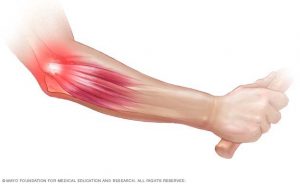I am a chiropractor and a mom. I have been through a pregnancy and a really rough delivery. I know the pain that can happen during pregnancy – I had some pretty severe back pain during my pregnancy and at times had difficulty getting out of bed. With some self care, a specific stabilizing belt that I wore for a couple of months, and some care from chiropractic friends, I managed to make it through it all while continuing to practice right up until I had the baby.
It can be rough. But it doesn’t have to be – there is help out there. I love helping pre- and post-natal women and have been doing it since I started practicing almost 17 years ago. I have to say I developed a much MUCH better appreciation for what pregnant women go through regarding pain after my own. I really feel we are best at providing treatment when we can really empathize with the problem.
Over the years I have seen it all from sciatica to round ligament pain to swollen and sore legs and feet, carpal tunnel syndrome (from swelling due to pregnancy), headaches and neck pain and way more. More than once I have been called in for an emergency house call for someone who couldn’t get out of bed because of back pain during pregnancy and after the birth of the baby. I am always honoured to be able to help.
While writing this blog I found some information directly from the Canadian Chiropractic Association – so I though why try to re-write something so well written? The following was taken directly from the Canadian Chiropractic Association Website –
“At least 50% of pregnant women will experience back pain, with many suffering from severe discomfort that impacts their activities of daily living. Pregnancy-related back pain can be multi-factorial and rarely only has one cause. Back pain, wrist pain and leg cramps are the most common complaints reported.
The average healthy weight gain is approximately 30 lbs, most of which is around the abdomen adding a significant frontal load. The added weight puts stress on the back, hips, knees and feet/ankles. Additional weight can lead to altered posture and biomechanics as we change the way we sleep, stand, and move during pregnancy. As the baby grows and the uterus expands, the abdominal muscles also stretch and lose their ability to support as they did. The change in posture, shifting forward, may cause pain and discomfort specifically in the lower back.
During the third trimester, levels of the hormone “relaxin” increase and contribute to the loosening of joints in order for the pelvis to accommodate for enlarged uterus, the baby and later birth. However, the loosening of joints can decrease joint stability and further alter posture. Other structures including musculature may be taxed, resulting in a predisposition to pain and injury. This may result in back pain.
Women report pain and discomfort including:
- Neck pain
- Low back pain
- Mid-back pain
- Pelvic pain and pressure
- Aching legs and buttocks
- Peripheral swelling
- Sciatica or shooting pain down the leg/foot
- Fatigue and low energy
- Night-time muscle spasms
- Carpal tunnel syndrome
- De Quervain tenosynovitis
- Sleep disturbances
Studies have shown that manual therapy, including chiropractic, can help decrease pain in pregnancy and labour. Chiropractors can provide safe, effective and drug-free conservative care to relieve pain and improve function during pregnancy and after birth.
Reduce back and pelvic pain: Conservative care including spinal manipulation and mobilization of joints and soft tissue therapy can help reduce pain and improve function.
Relieve fatigued, aching muscles: Chiropractic treatment plans can include soft tissue therapy and various modalities including TENS, IFC, and acupuncture among others. Chiropractors can also recommend exercises to help rehabilitate postural changes.
Help prepare for childbirth: A chiropractor can recommend safe, effective exercises and stretches to help prepare your body for the baby’s delivery.
Ensure a faster recovery: As part of a comprehensive plan of management, chiropractic treatment can help manage quicker recovery and address post-natal biomechanical complaints and rehabilitation.”



